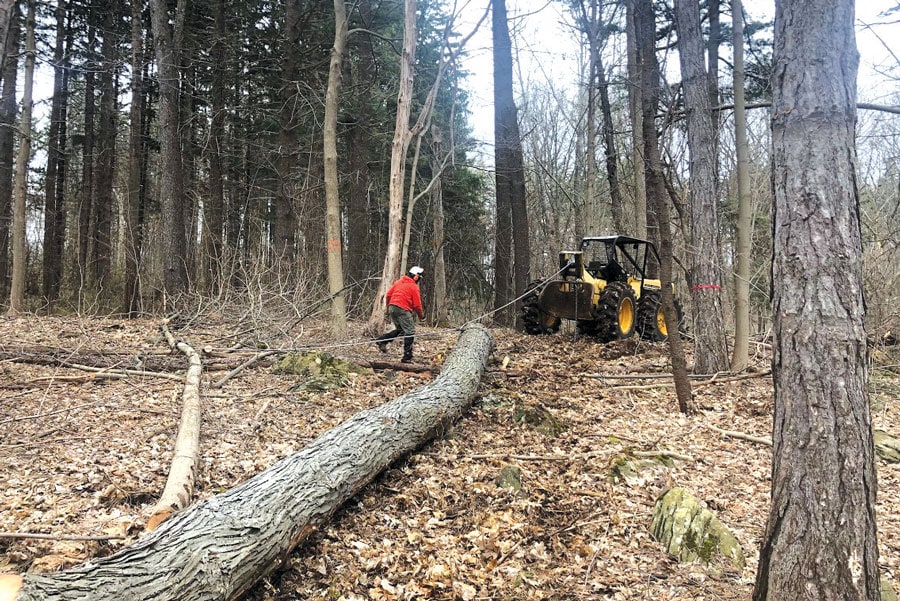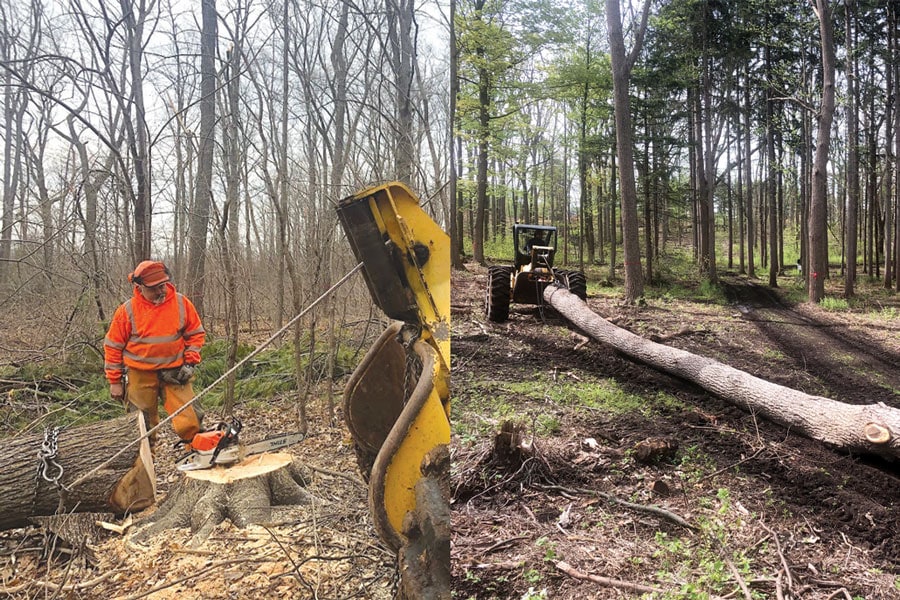The American Chestnut Research and Restoration Project at the SUNY College of Environmental Science and Forestry (ESF) has developed a blight-tolerant American chestnut tree. Their goal is to reintroduce a population of these resistant trees back into forest ecosystems of New York and then the rest of the eastern United States.
The Challenge
As part of the Chestnut Project, crews planted these new American Chestnut seedlings among more mature trees and will then monitor the forest. Crews first needed to remove some of the existing trees to make room for the seedlings. It was important that the remaining trees were damaged as little as possible during the harvesting operation.
For forestry work, SUNY ESF use a John Deere 440A skidder, traditionally with a metal cable and winch.
The Solution
Cortland supplied a 3/4″ diameter Plasma® 12-Strand rope, 100′ in length to the ESF Forest Properties team. The rope performed flawlessly, providing no noticeable difference in strength or abilities than the wire rope used previously.
SUNY College of Environmental Science and Forestry (ESF) employees Ray Bartholomew and Norris Shute work with Plasma® rope from Cortland in forestry operations.
“Using the Plasma® rope from Cortland helped minimize the damage done to the remaining trees,” said Jill Rahn, Forest Resource Analyst, SUNY ESF. “Its lightweight features allowed us to maneuver it around the rocky soils easily. It was also very simple to switch out the old metal cable on the skidder.”
The Result
Steel wire rope has been the standard for cable and winch applications in logging and is used around the world in large quantities. While many of wire rope’s characteristics are well suited for logging, other characteristics make working with it difficult and at times dangerous. Wire rope is primarily constructed from steel, which although strong, is very heavy, will deform under stress and bending, stores energy under load—sometimes snapping back with dangerous results—and can have very sharp edges and ends.
Over the last twenty years, ultra-high molecular weight polyethylene (UHMWPE) fiber ropes have increasingly replaced steel wire ropes. Modern high strength synthetic fibers are as strong as steel wire ropes, but 86% lighter. They are remarkably durable and will not rust, corrode or fish-hook. They are not affected by salt or fresh water, and wear points can be protected from abrasion, cutting and heat damage. They are also easy to inspect and repair.
Being much more flexible and lighter—one-seventh the weight of steel wire rope of similar diameter and strength—UHMWPE rope from Cortland is much easier to work with. The reduced effort required by crews means longer winching distances can be achieved and increased abilities to work in and around sensitive areas are possible. Additionally, crews gain productivity with time savings over the use of wire rope because synthetic rope is easy to carry, spool, and splice.
Forestry professionals can convert to Plasma rope without much effort. Very few adjustments to the usual practices are required as Plasma rope performs in a manner very similar to wire rope. In most cases immediate advantages are seen, such as winding the synthetic rope onto the drum can be done very quickly with almost no additional equipment. Splicing and hooking up rings, sliders, and other rigging pieces is very simple.
Many times during the first days of trial, users will say, “I could never do that with wire rope,” as they carry the entire length over to a machine, or pull the rope through the woods to each log choker.
Kevin Blatt, Senior Design Engineer, Cortland Company said, “Synthetic rope solutions offer improved safety, reduced workloads, and bring high-performance technology to important industry sectors such as forestry.”

